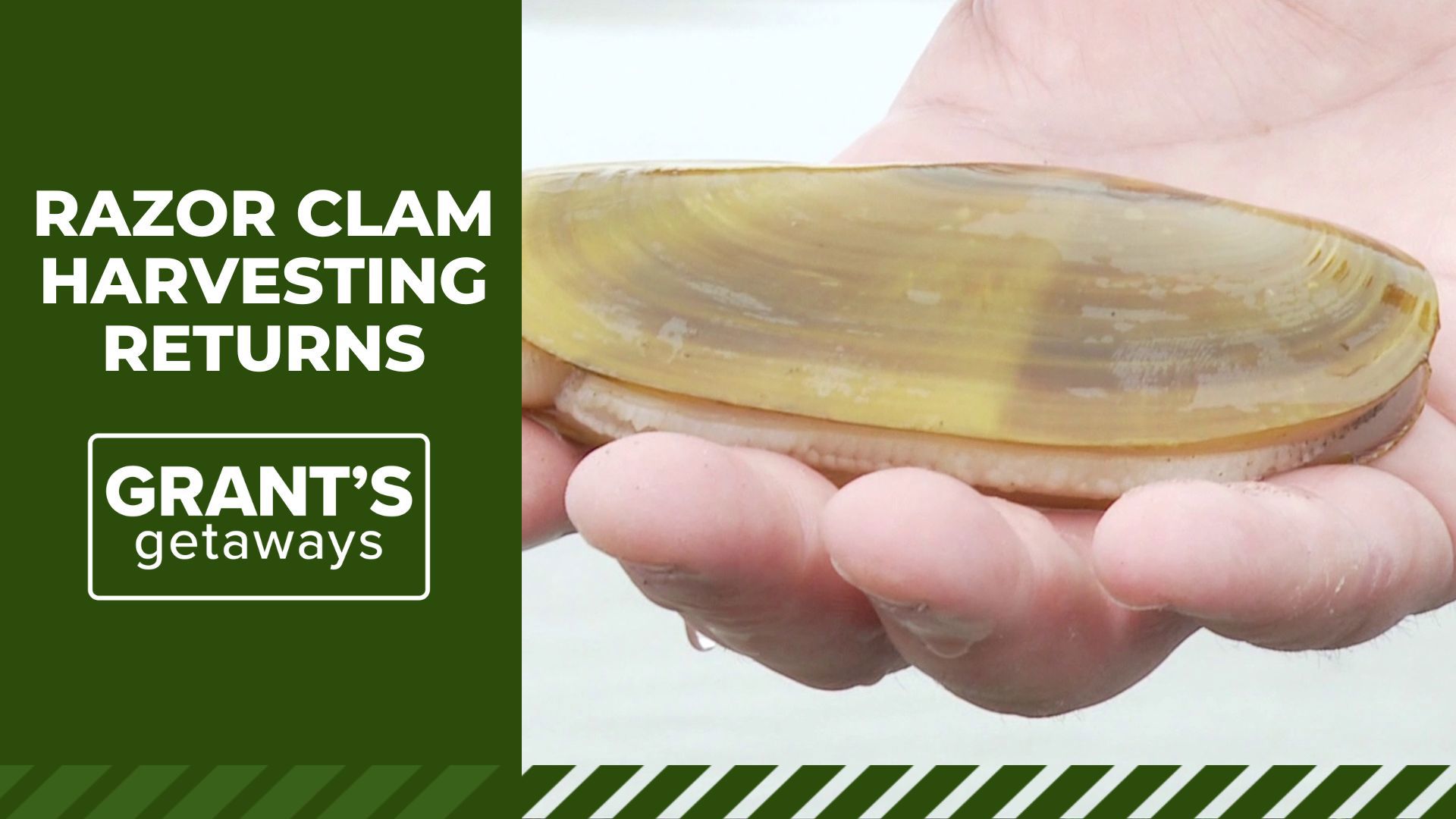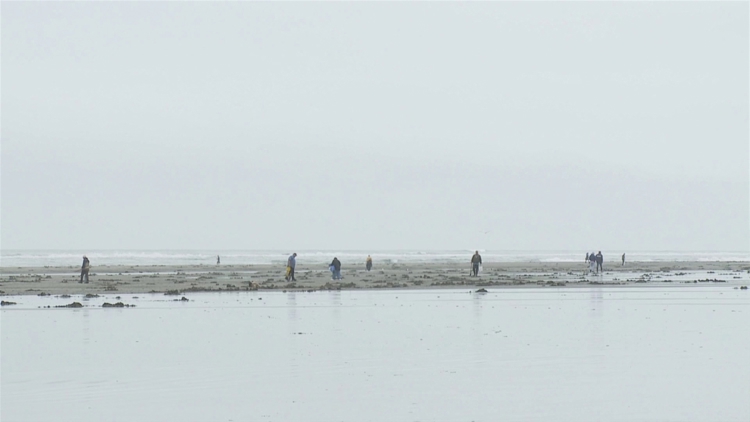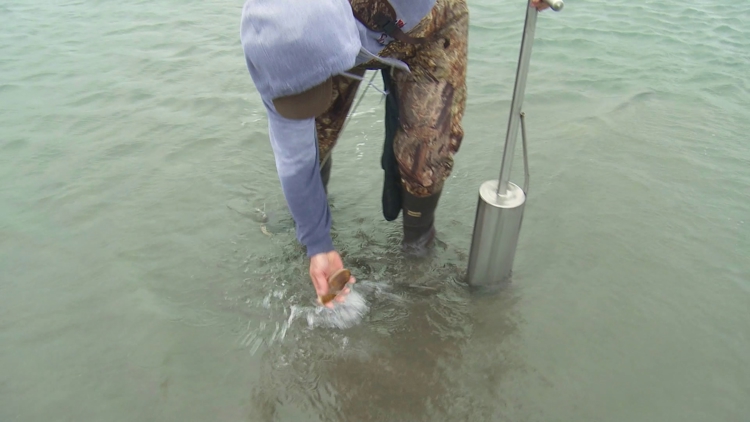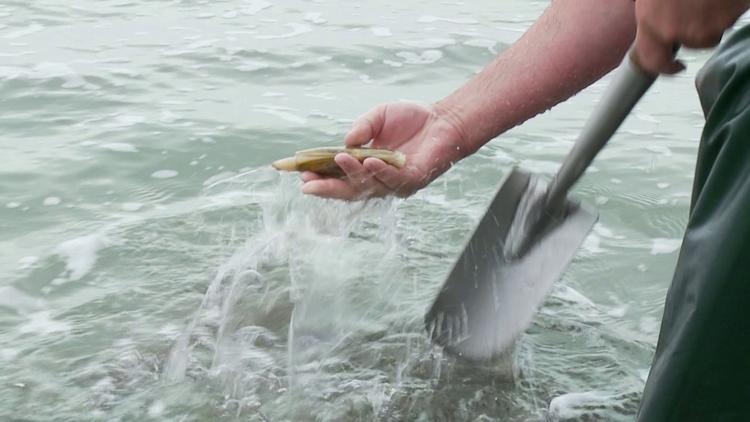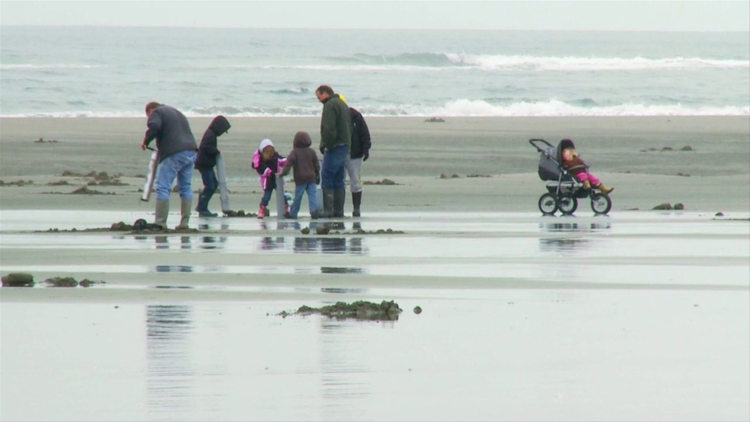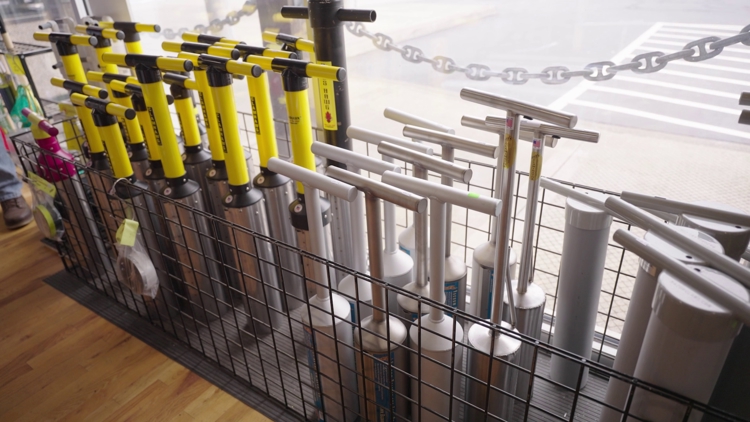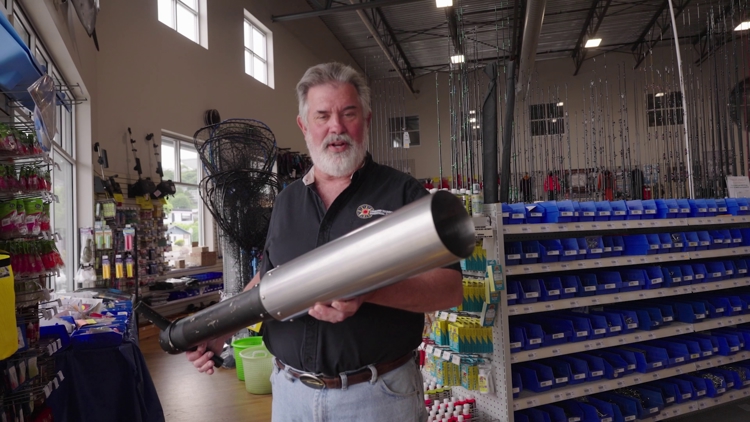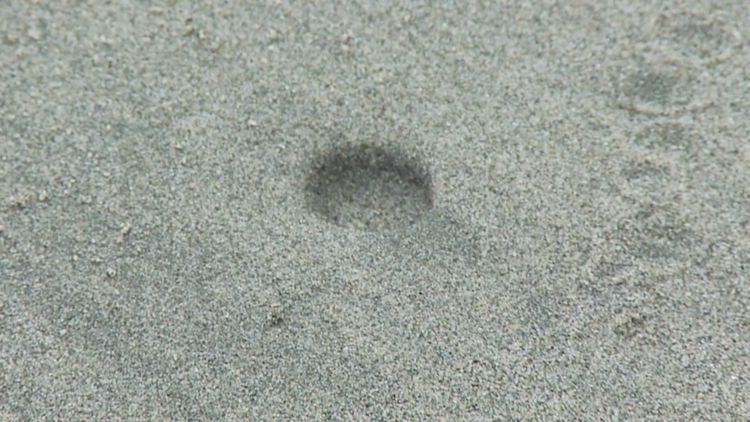PORTLAND, Ore. — After a brief health advisory closed razor clamming earlier this spring, the popular pastime reopened along most Oregon beaches.
On Friday, the Oregon Department of Fish and Wildlife reported that harvesting for razor clams is open from the Washington border to Yachats River and from the Coos Bay north jetty to California border. It remains closed from Yachats River to the Coos Bay north jetty.
Oregon’s beaches are popular destinations for all sorts of recreational activities, and one of the most popular sandy stretches is along 18 miles of shoreline in Clatsop County.
Local resident Steve Fick likes to say, "When the tide goes out, his dinner table is set" with razor clams. He really digs his beachside recreation: razor clamming.
"Oh, Grant, there are clams galore this season," he said. "One of the best, most plentiful clam seasons."
That much is certain, but if you’ve never dug this sport, how do you get started?
Fick relies on a short-handled shovel with a long steel blade specially designed to quickly dig deep enough in the soft sand to get hands on the speedy razor clam.
It’s a place where thousands of people flock to dig hundreds of thousands of razor clams each year.
"There’s a clam hole right there, Grant," noted Fick.
He pointed to a small, quarter-sized dimple in the sandy surface.
"The clam's neck is just under that dimple. It's a giveaway sign that there's a clam down there," he said.
Photos: Razor clam harvesting
Fick added that over a million clams might be harvested most years from the 18 miles of Clatsop County beach between Seaside and the Columbia River.
"That's where 95% of all the clams in Oregon are dug — the beaches right here," Flick said.
Fick is an old hand at the clam game; he can even spot the critters in the surf.
"Well, sometimes when they're feeding, they stick their neck up and out right in the shallow surf line," he said. "It makes a little V and we call those 'neckers.' Once you get the knack for spotting them, it’s easy."
Speed is critical because the razor clam moves through soft sand like a hot knife through soft butter.
"You go about two inches to the side of the dimple and then you pull the shovel toward the hole," Fick explained. "You pull the sand up and reach your hand in underneath. Feel for the neck and pull the clam up — but not too hard or you pull the neck off."
It’s a technique that takes practice, so first-timers usually stick to the clam gun technique for a successful clam digging adventure.
Many other clam diggers, like Paul Watt, rely on double-fisted, long-barreled stainless-steel "clam guns."
"It's addicting because you never know if it’ll be a big one or a little one," he said. "It’s just a lot of fun. I love coming out here on a minus low tide to dig on the sand bars that are revealed. It’s really good clamming when that happens."
Oh, and what does Watt like to do with all those daily limits of delicious razor clams?
"We broil 'em in the oven. Put a little breading on each and the flavor stays. Just five minutes or less under the broiler, and they are perfect," he said.
But if you don’t know a "clam show" from a side show, here’s where to start: Englund Marine and Industrial Supply in Astoria and a visit with manager, Mark Ackerill.
Ackerill is longtime manager at Englund Marine and importantly, a lifelong coasty who knows all about razor clamming, especially those popular clam guns.
"They work great. They're easy in and out of the sand," Ackerill said. "If you've got a bad back, the new air tubes break the seal on the sand so you can pull them up really easy."
Clam gun favorites include tools that mean business called the Clam Hawk, the larger Clam Hawg and the granddaddy of them all — called the Boss Hawg.
"That’s a five-and-a-half-inch tube and I don't have to be a good shot," he said. 'I'm a tall, heavy-set guy, so it goes in and out of the sand real easy and an awesome gun too."
When it comes to the clam shovels, Ackerill said it's important to remember: "Shovels are not meant to be used like a garden spade. You don’t put it in the ground and pry back on it. You slide the shovel in, and you pull a little sliver of sand and stick your hand down in and grab the clam."
Ackerill added that each digger 14 and older must carry an Oregon shellfish license. They must dig and carry their own limit of 15 razors.
Finally, consider Englund Marine your one-stop shopping center for your next razor clam adventure.
"You can bring your wife, your kids; we have extra stuff for little kids. We’ve got everything you need to go clam digging: boots, rain gear, guns, shovels, bags," Ackerill said. "We can actually give you plenty of advice on where to go too."
Be sure to watch the weekly half-hour program of Grant's Getaways. The show airs each Saturday and Sunday at 4pm on KGW. You can also learn more about many of my favorite Oregon travels and adventures in the Grant’s Getaways book series, including:
- "Grants Getaways I," Photography by Steve Terrill
- "Grant's Getaways II," Photography by Steve Terrill
- “Grant’s Getaways: 101 Oregon Adventures,” Photography by Jeff Kastner
- “Grant’s Getaways: Guide to Wildlife Watching in Oregon,” Photography by Jeff Kastner
- “Grant’s Getaways: Oregon Adventures with the Kids,” Photography by Jeff Kastner
The book collection offers hundreds of outdoor activities across Oregon and promises to engage a kid of any age.
You can reach me: Gmcomie@kgw.com.

